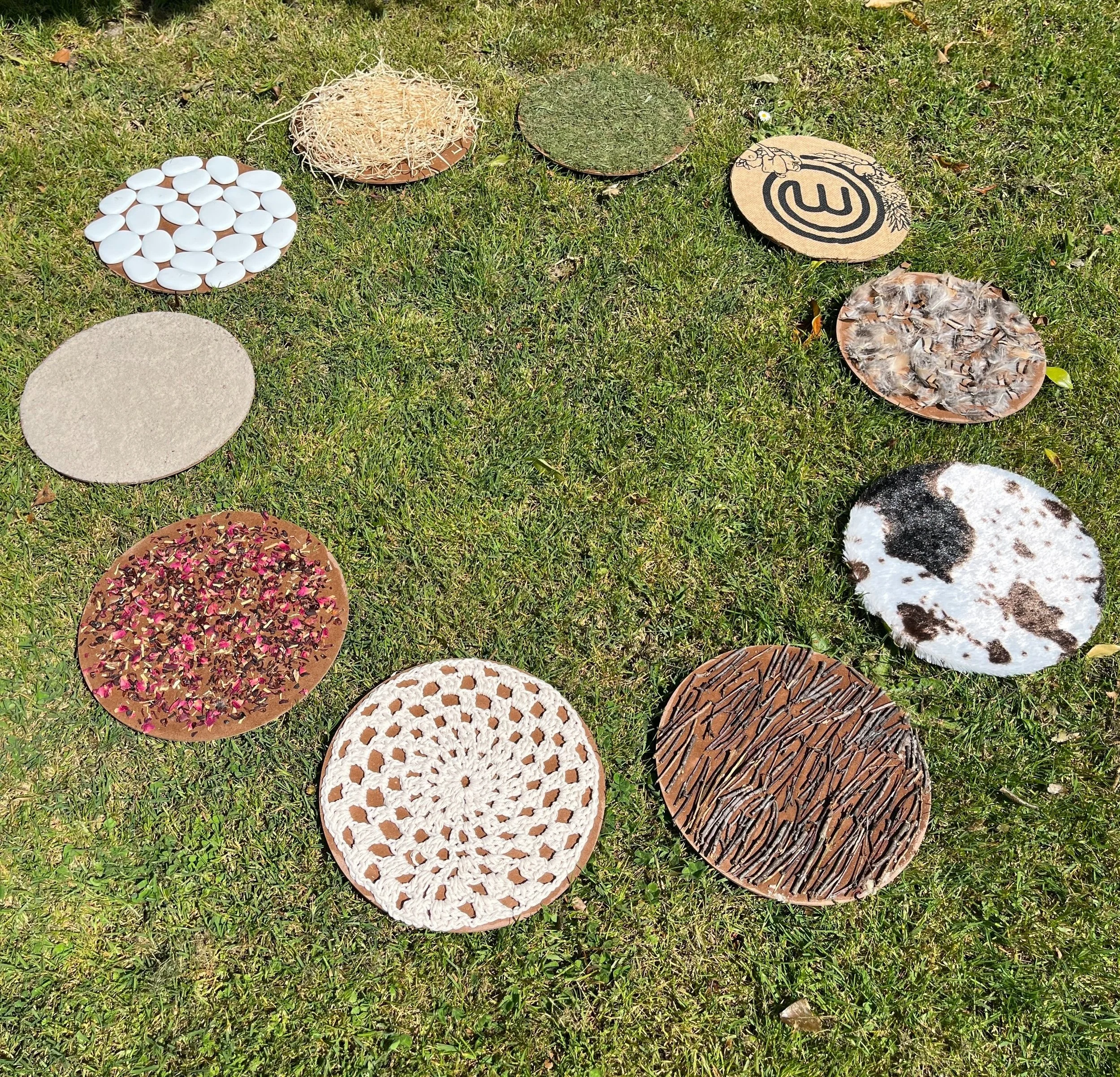Resources
-

Lets Go Exploring - Colouring pages
Print off the illustrator’s original drawings from the story so children can colour them in for themselves. Children can be encouraged to find the listed items in the book.
-

Let's Go Exploring - Yoga cards
Print off and laminate the yoga poses from the story. Use these in activities connected to the story;
placed around the room/playground for children to model while going exploring
children could be in a circle moving on the spot or around circle, saying rhyme from story. When the rhyme stops someone chooses a yoga pose to try.
or children sitting still in circle passing an object around saying rhyme from story. When rhyme finishes whoever is holding the object chooses a yoga pose.
-

Let's Go Exploring - Scavenger hunt
Print off the scavenger hunt templates and encourage children to search for items outdoors. These sheets could be laminated and marked with a whiteboard marker for continued use.
-

Let's Go Exploring - Guided meditation
Print this guided meditation which can be used at the end of the story, movement/drama/yoga activity or simply on its own. Children can be encouraged to lie down on their backs as the children are doing at the end of the story. An adult can read the script in a calm voice as they move slowly around the group of children to help maintain engagement.
-

Let's Go Exploring - Make your own puzzle
Print off the two grid pictures from story. Children can cut along the lines to make 9 puzzle pieces, then reassemble the picture. Great for eye/hand coordination and visual perception.
-

Let's Go Exploring - Memory game
Print two copies of these pages, cut, laminate and you have your own memory game. Children could attempt to cut along lines themselves and put through the laminator with guidance, gaining a sense of ownership and independence.
-

Bare Feet - Tactile mats
Tactile mats can be made by attaching a variety of textures such as sand, pebbles, fabrics, sticks, feathers for example onto wooden/cork/cardboard discs. As an introduction children could begin feeling surfaces with their hands or with socks on until they feel ready for bare feet. Exploring surfaces inside first may be another way to ease them into the experience. Tactile mats could be set up as a pathway or circle. Musical statues could be played on the mats. When the music stops children need to stand still and notice the texture they’re standing on or could do a standing yoga pose demonstrated in the book. They may even be able to describe what they are feeling.
-

Bare Feet - Feet activities
foot painting
foot tracing
foot massage
guessing game (objects rubbed over children’s feet and they guess what it is)
sensory obstacle course (tubs/trays of sensory experiences to walk through such as sand, water, bubbles, mud, goop, shave foam.
-

Bare Feet - Shoe game
An important skill to learn when going bare footed is being able to remove and put on shoes and socks. This is a group game where children remove one shoe and place it in the middle of a circle. Shoes can be left visible or covered to make the game more challenging. Children take turns to choose a shoe then try to find the owner of the shoe. Shoes then need to be put back on.
A song/rhyme could be sung while the owner of the shoe is found. For example:
Who owns the shoe?
Who owns the shoe?
Where does this shoe belong?
Who owns the shoe?